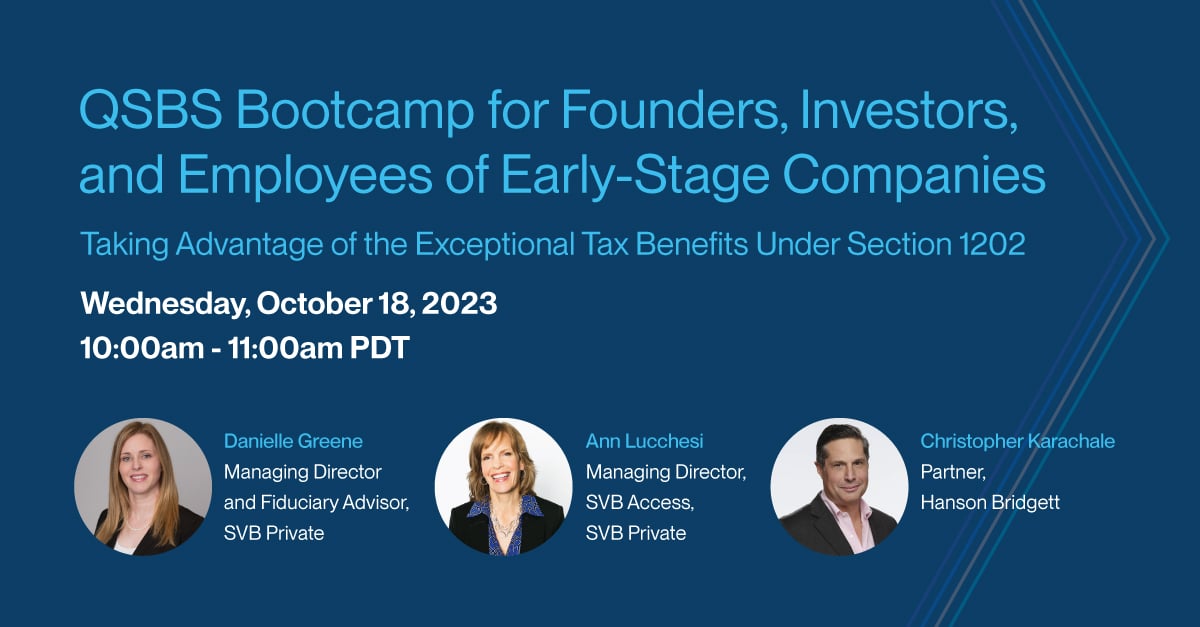We’re pleased to provide you with insights like these from Boston Private. Boston Private is now an SVB company. Together we’re well positioned to offer you the service, understanding, guidance and solutions to help you discover opportunities and build wealth – now and in the future.
Here's a Way to Reduce Your Taxes While Pursuing Innovation
A part of the Business Toolkit series
Thanks to recent tax reform, the federal government now offers a research and development (R&D) tax credit to a large segment of the business community as a reward for organizations that strive to invest in innovation. If you want to take advantage of this opportunity, how do you know if your business qualifies for the R&D tax credit?
R&D requirements
To receive the credit, you must pass a four-part test, which covers the following areas:
- Qualified purpose: To pass this requirement, the activity must create or improve a product, process, software, technique, formula or invention with respect to its functionality, performance, reliability or quality. Further, you must intend to use it in your business, or retain ownership with a view to a sale, lease or a licensing arrangement.
- Technological uncertainty: A degree of uncertainty must exist regarding the development and design of the new technology.
- Process of experimentation: To address uncertainty, your company uses modeling, simulation, trial and error and prototyping.
- Technological in nature: The evaluation process must rely on "hard" sciences, such as chemistry, biology and physics as opposed to "soft" sciences, including economics or psychology.
How to use R&D tax credit
If you qualify, how can you best take advantage of the tax credit? The R&D credit covers qualified research expenses, which include wages paid to employees for certain services; supplies used during the R&D process; payments to third parties to perform qualified research activities on your behalf; and payments made to qualified research institutions or scientific research organizations, with a cap of 75 percent of the amounts incurred.
If your company receives the credit, it may make sense to embark on an expansion effort, which could include building a new facility or acquiring a competitor, paying down or refinancing debt, or investing more in R&D to generate additional credits.
The exclusions
Since the purpose of the R&D tax credit is to foster economic activity in the United States, there are a number of exclusions. Some of these already appear in the four-part test, including the need to rely on hard sciences.
The activity must take place in the U.S. and cannot cover routine data collection or market research and consumer testing. The activities subject to the credit cannot receive funding from an unrelated third party because your company might not retain ownership of the resulting intellectual property.
The impact of the PATH Act 2015
Thanks to the tax reform brought about by the PATH Act 2015, an important change made the R&D credit more widely available. Startups with no federal tax liability, and gross sales of less than $5 million, can apply the credit against the employer-part of Social Security taxes, with a cap of $250,000 over a five-year period.
How we can help
Deduction eligibility — along with how much you can claim — depends on the kind of business you conduct, as well as your 2018 income amounts and sources. Plan to carefully parse through any amount you've taken in from your property investments as only some forms of real estate income are deductible.
A tax professional can validate specific tax exemptions or deductions and help you understand what you can claim and how that number will impact your return. Working with a professional will help you maximize your return amount and strategize how you can use it to benefit your business in the coming year.
A SVB Private representative can help with any questions you have when it comes to managing your businesse's financial planning.














